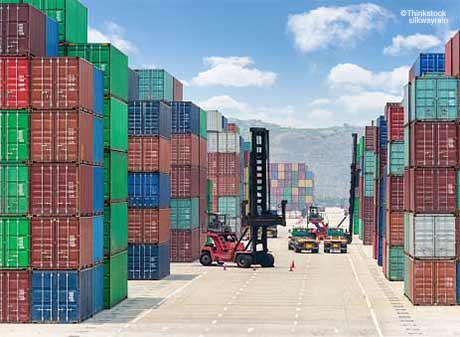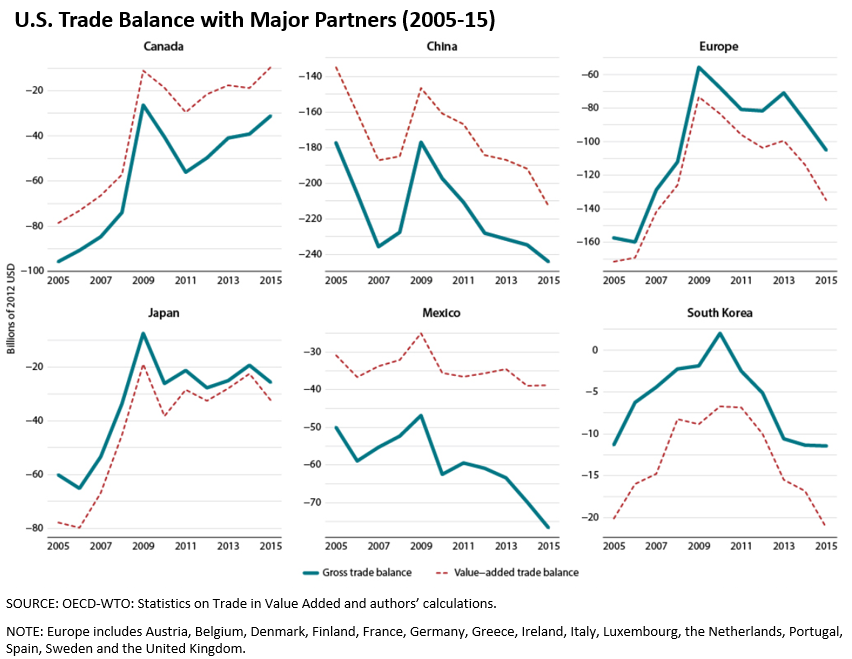Comparing Value-Added Trade and Gross Trade

What is the difference between gross trade and value-added trade? And given increasingly complicated supply chains, which one provides a more accurate picture of global trade?
In an Economic Synopses essay, Senior Vice President and Deputy Director of Research B. Ravikumar and Research Associate Brian Reinbold addressed these questions. They also compared the U.S. trade balance with several major trading partners using the two measures.
Gross Trade vs. Value-Added Trade
Ravikumar and Reinbold noted that traditional measures of trade record gross, or total, flows of goods and services each time they cross a border; this includes the cost of inputs plus the value added by each country and leads to double counting. An alternative is to measure the value added (e.g., labor compensation and profits) by each country at each step of the production process, they said.
To illustrate, they gave the example of Mexico assembling a vehicle. They noted that only a third of the value is derived from Mexican parts and labor, while the rest is from foreign components—a large share of which is imported from the U.S. But when Mexico sends the vehicle to the U.S., the entire factory cost of the vehicle (i.e., the cost of all of the parts and assembly) gets added to the U.S. trade deficit with Mexico, they said.
In this example, the U.S. trade deficit with Mexico is much larger when using gross trade than when using value-added trade.
U.S. Trade Balance with Major Partners
Using Organization for Economic Cooperation and Development (OECD) data for 2005-15, the authors looked at the U.S. trade balance with major trading partners in terms of real gross trade and real value-added trade.
They found that the U.S. bilateral trade balance can vary significantly depending on which measure is used, as seen in the figure below.

They pointed out that, when looking at the value-added trade balance rather than the gross trade balance:
- The U.S. trade deficit with Canada and Mexico is 40% smaller, on average.
- The U.S. trade deficit with China is 20% smaller, on average.
- The U.S. trade deficit with Japan is 40% larger, on average.
- The U.S. trade deficit with South Korea is twice as large, on average.
Ravikumar and Reinbold concluded: “Conventional trade statistics may have been sufficient when goods were produced entirely within a nation’s borders and then exported to other countries; but with increasingly complicated supply chains and an increasingly interconnected global economy, value-added trade can provide a more accurate picture of global trade.”
Additional Resources
- Economic Synopses: Value-Added Trade vs. Gross Trade
- On the Economy: The Evolution of Total Trade in the U.S.
- On the Economy: How Open Are Countries to Trade?
Citation
ldquoComparing Value-Added Trade and Gross Trade,rdquo St. Louis Fed On the Economy, June 25, 2020.
This blog offers commentary, analysis and data from our economists and experts. Views expressed are not necessarily those of the St. Louis Fed or Federal Reserve System.
Email Us
All other blog-related questions

